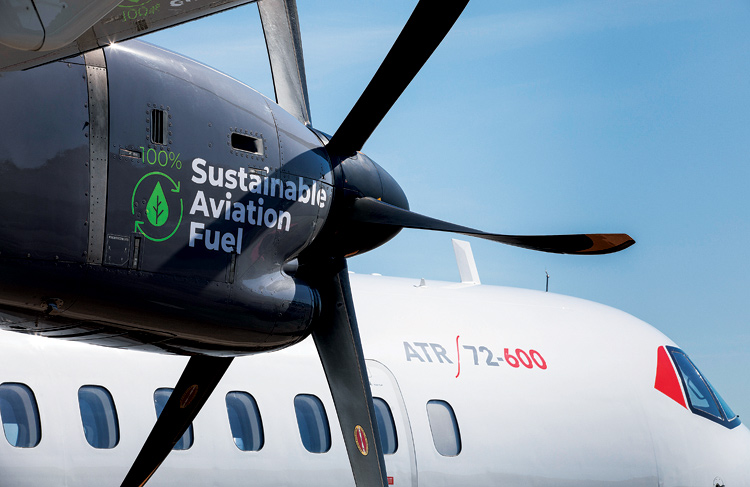- Prime Minister Narendra Modi inaugurates Aero India 2023 in Bengaluru; Releases Commemorative Stamp
- Defence Secretary meets delegations from Saudi Arabia, USA and Oman on the sidelines of Aero India 2023
- Foreign Ministers of 32 countries to attend Aero India 2023
- Embraer showcases the C-390 Millennium at Aero India 2023
ATR's Contribution to Sustainability
Climate change is one of the greatest challenges of our time and ATR has a robust plan to address its consequences and contribute to the industry's goal of net-zero carbon emissions by 2050

During the IATA Annual General Meeting held in Boston in October 2021, ATR, in alignment with the broader aviation industry, pledged a significant commitment to achieving net-zero carbon emissions by the year 2050. ATR's comprehensive low-carbon strategy is designed to address emissions arising from both internal operations and the utilisation of their aircraft. This strategy is implemented through a rigorous action plan that adheres to the goals set forth in the Paris Agreement, utilising the 'Science-Based Target initiatives (SBTi)' methodology, which incorporates the latest insights from climate science.
ATR'S ENVIRONMENTAL APPROACH
In line with the vision and the commitments of the Paris Agreement, ATR aims to 'to deliver and support themost efficient and lowest emission regional aircraft on the market' and to drive the transition of regional aviation towards net-zero. ATR not only tracks and measures the environmental impact of our sites, products, and services, they also work in cooperation with their supply chain to drive more effective environmental management, decarbonise the industry and optimise resource utilisation. To this end, they have set four key environmental ambitions:
- Drive the transition towards net-zero carbon emissions by 2050 in the regional aviation ecosystem
- Develop sustainable products and services leveraging innovation and eco-design
- Reduce the environmental footprint of their activities
- Promote sustainable use of natural resources throughout their value chain.
A collective effort from aircraft manufacturers and airlines is underway to enhance efficiency and reduce CO2 emissions, reflecting a shared commitment to environmental preservation. ATR's turboprop aircraft are currently recognised as the most efficient and lowest-emission form of regional air transport. For instance, the 70-seater ATR 72-600 emits 45 per cent less CO2 per trip compared to a similar-sized regional jet, translating to a reduction of 4,400 tonnes per aircraft annually. Additionally, these turboprops do not form contrails, which further contributes to mitigating climate change. ATR remains dedicated to upholding its pivotal role in sustainable aviation and fostering environmental stewardship within the industry.
The company remains at the forefront of innovation, actively exploring hybrid-electric propulsion technologies to further mitigate emissions and noise. Ongoing research into advanced materials and optimised designs underscores ATR's commitment to developing even more fuel-efficient and sustainable aircraft in the future.
As the foremost regional aircraft manufacturer globally and recognised as the most sustainable commercial aircraft provider, ATR plays a crucial role in connecting people and places in a sustainable and modern manner, even in remote locations. Acknowledging its position as a leader in regional aviation, ATR recognises its responsibility to spearhead the transition toward a more sustainable future.





